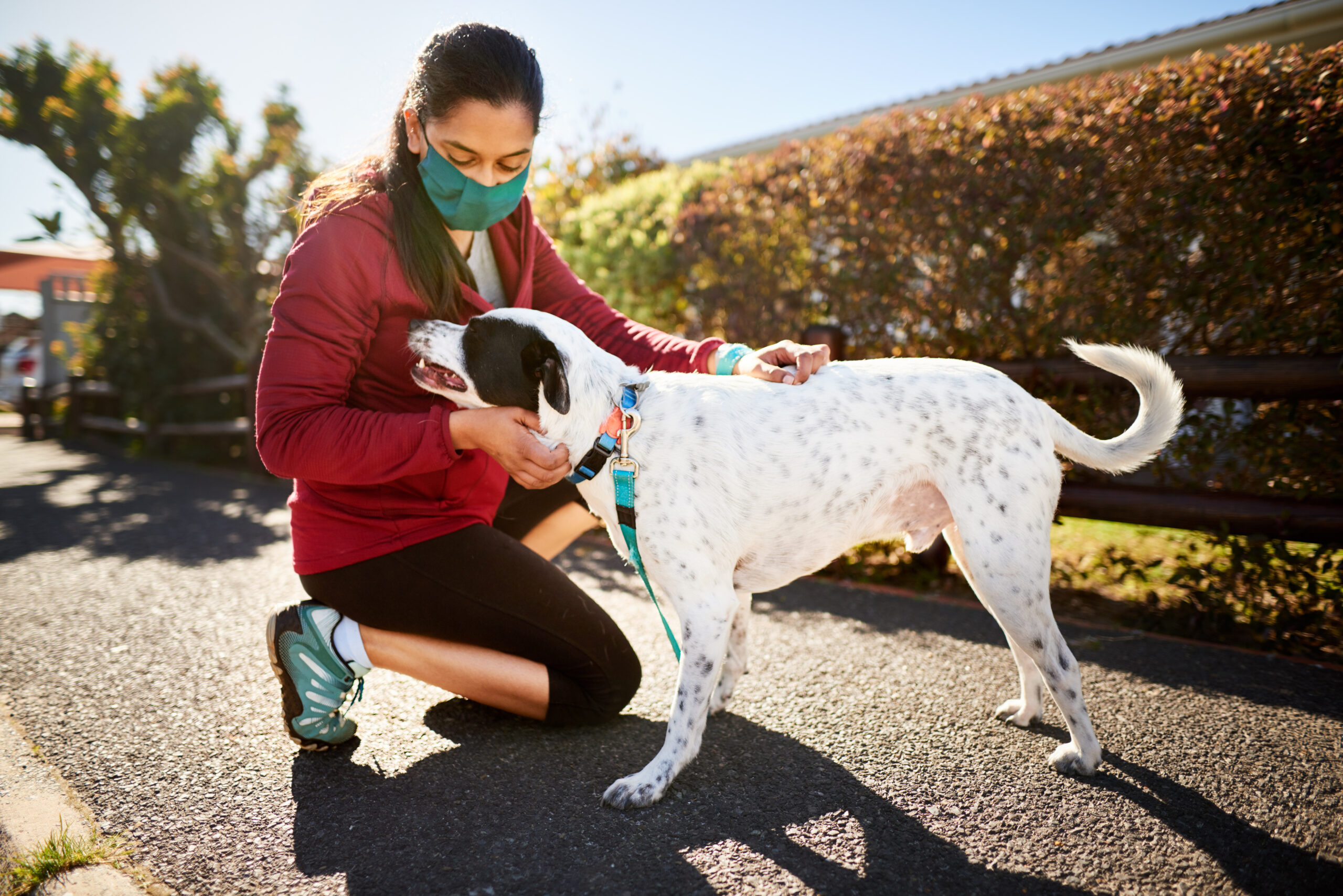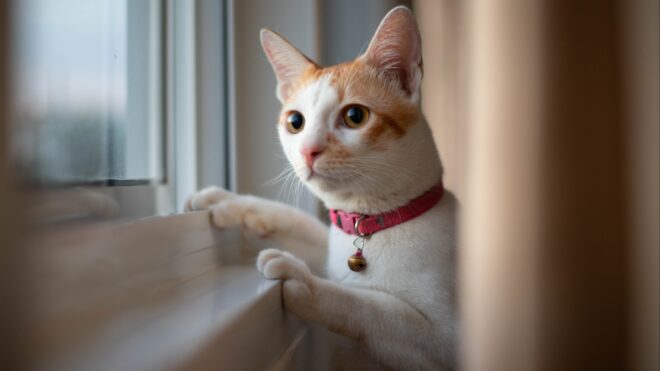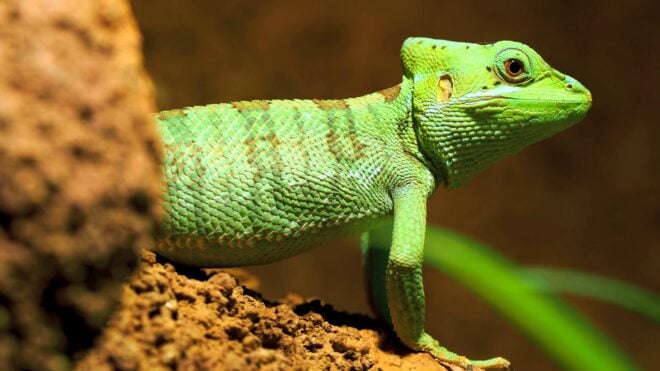
French poet Anatole France once declared, “Until one has loved an animal, a part of one's soul remains unawakened.” Pets do so much for us, and Valentine’s Day is the purr-fect opportunity to spoil our furry family members.
A recent survey by Wild Earth examined pet parents’ behavior and celebrations for the upcoming holiday. Here are a few ways pet parents are planning on celebrating their fur children:
• Buy a special gift (37%)
• Make a special meal (31%)
• Dress them up (26%)
• Do a pet photo shoot (20%)
Some of these ideas might be more for human enjoyment than for the pets, so to get to the bottom of how pet parents can and should show their pet love — and keep them safe — on Valentine’s Day and all year long, LittleThings spoke with Sarah Machell, DVM, medical director at Vetster.
Here are three ways to show your pet some love:
Speak Your Pet’s Love Language

“When trying to communicate our love to our pets, it’s important to keep in mind that pets are not human,” says Dr. Machell. “While pets do have emotions and appreciate affirmation of our affection, understanding how pets express that appreciation can be key to being sure we communicate back to them in the language they understand. Your pet's adoration of you, wanting to be with you, and accompanying you while you do tasks — including following you to the bathroom — is an expression of love. Reciprocating that expression by making extra time for longer, extra walks, extended interactive laser pointer sessions, and snuggles on the couch to watch your mutually favorite shows gives them that warm and fuzzy companionship buzz they crave.”
Support Their Self-Care
“Your pet may not always make the best food choices to support a healthy lifestyle — eating things like insects, other creatures' fecal matter, and rodents are some clear examples,” details Machell. “Choosing to partner with a veterinary professional to ensure that you are prioritizing their preventative and wellness care is a marvelous way to both care and love your pet through a longer, healthier life. Prioritizing your pet’s health is one of the best expressions of love a pet could wish for.”
Know That Food Is Not Always Love
“Helping to ensure your pet maintains a healthy body weight by making sound nutritional decisions for them is a gesture of love in the greatest form,” reminds Machell. “Pet obesity is a significant concern for an astonishing number of household pets. Just as in humans, the health risks associated with obesity are staggering: joint and mobility challenges, heart disease, respiratory illness, and diabetes, to name just a few. You can love your pet with food, but make sure your decisions regarding your pet’s nutrition are well-informed. Navigating the truths in the world of pet nutrition can be a daunting task, and all too easily we can be tempted to overindulge our pets with snacks and treats.”
Now that you know the best way to show your pet love, here’s what to avoid to keep them safe! Romance might be in the air at home, but it can also be a pet safety hazard. According to Trupanion, a leader in medical insurance for cats and dogs, chocolate made up 70% of toxicity-related claims in the weeks surrounding Valentine’s Day over the last five years.
Here are Dr. Machell’s tips for planning a safe and stress-free Valentine’s Day:
Paws Off the Sweet Stuff
“It should come as no surprise that chocolate is a big no-no for pets, with the potential to cause life-threatening illness when ingested,” warns Machell. “But did you know that most candy has a similar risk? Many sugar-free candy products are made with xylitol, which is highly toxic to dogs. Symptoms include a sudden drop in blood sugar, vomiting, and seizures and can come on very quickly. Be diligent to ensure that no sweets are left out where pets can find them.”
No Lilies for Kitties (or Puppies)
“Flowers and Valentine’s go hand in hand, but if you receive a bouquet this year, be careful not to expose your pet to any dangerous flora. Remember, ‘no lilies for kitties’ — the entire plant, from its stem to its flowers, is toxic to cats,” notes Machell. “Even just a few pollen grains or drinking a small amount of vase water can cause fatal kidney failure in as little as three days. Lilies can also cause vomiting and diarrhea in dogs, so keep these away from all pets.”
Keep It Tidy
“After unwrapping any Valentine’s gifts, be diligent to gather up any ribbons, cellophane, and wrapping materials,” says Machell. “Pets love to chew and play with stringy scraps, but if any of these get lodged in their throat or digestive tract it can lead to vomiting, choking, and even intestinal blockages — resulting in one expensive visit to the vet.”
Drink Responsibly
“Many enjoy indulging in a glass (or two) of wine over a romantic Valentine’s dinner,” adds Machell. “Unfortunately, many pets aren’t picky when it comes to lapping up anything left on the dinner table. Alcohol can cause nausea, loss of coordination, and even coma if enough is ingested. Always keep an eye on your beverages, and never keep them at pet level.”
Set the Mood Safely
“Candles might set the mood for a romantic Valentine’s evening, but open flames can wreak havoc on your Valentine’s festivities if they get knocked over by a curious cat,” says Machell. “If you decide to use real candles, keep them far away from where nosy noses and pawing paws can reach them.”
On Valentine’s Day and every day, it’s always a good idea to “paws” and show your pet some love!




